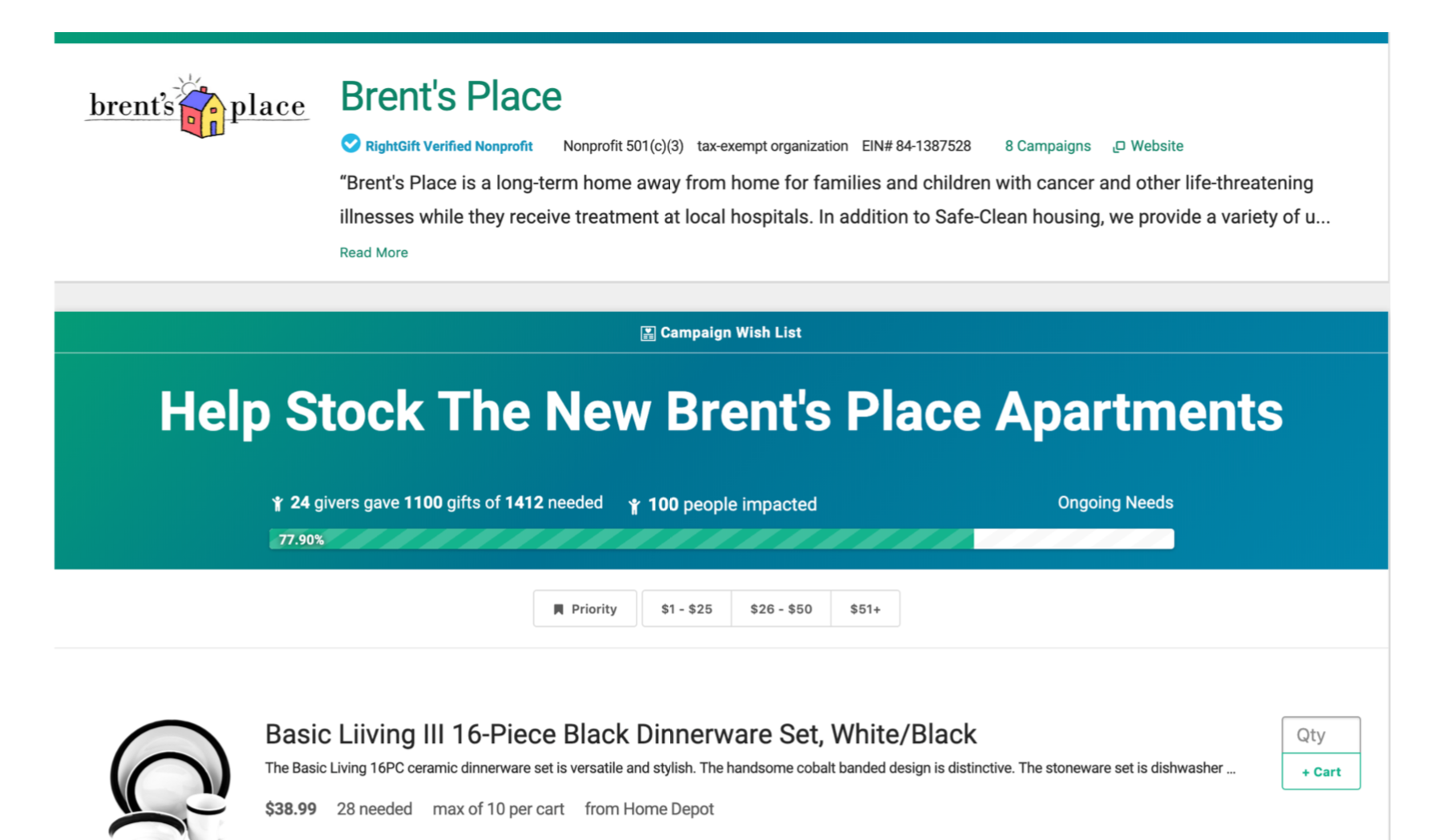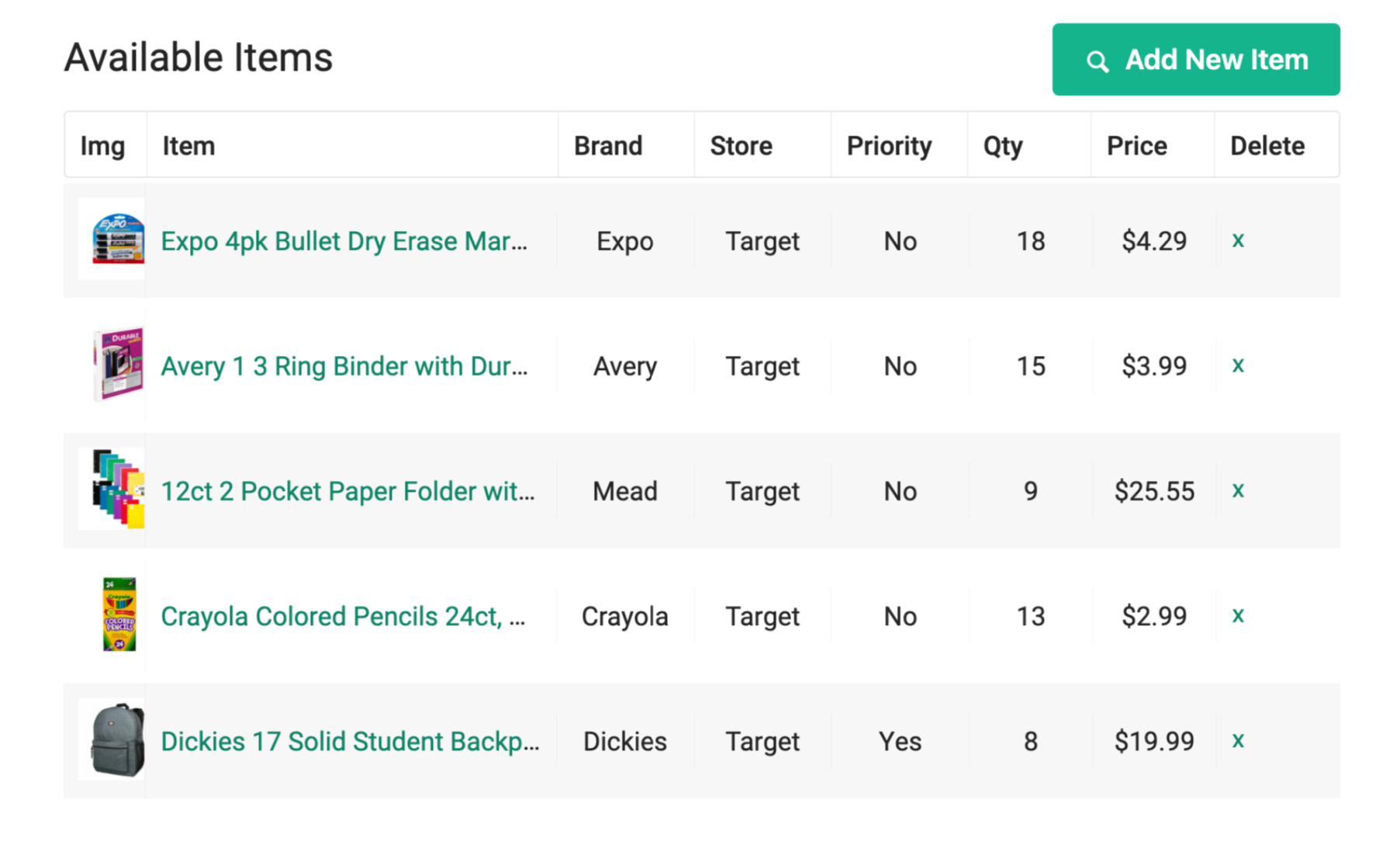Getting your first workplace gifts-in-kind campaign under your belt can be both exciting and intimidating.
Perhaps you don’t think of yourself as a fundraiser - after all, you have a ‘day job’ at a company. Or you are worried that the campaign will be very high profile at your company, attracting lots of senior leadership attention. Or maybe you just haven’t done this before, and you want to be thorough. For all of these reasons and more, we are here to help you every step of the way!
And speaking of “steps”, every good campaign starts with a plan. This doc is that plan … that “How do I do that?” roadmap to success.
Conducting a gifts-in-kind campaign with RightGift is easy and fun. This guide will walk you through 9 simple steps to help ensure your success. Remember: your efforts represent an important cause that will benefit lots of people. So your success matters to us, too. Good luck. Now, let’s get started!
9 Simple Steps to Workplace Campaign Success
Step 1: Choose a Cause
Sounds obvious enough.
The motivation to fundraise always starts with the cause. And more specifically, with a particular charity or school that you want to support. Your company may already have identified charity partners. Or, like many companies today, the emphasis is supporting the causes that employees care most about, so the burden is on the employee to speak up on behalf of that favorite cause.
Also give consideration to the calendar - is it a good time to support back-toschool drives, food pantries, or a particular holiday giving theme?
Causes to consider:
| Animal welfare | Disability services | Homelessness |
| Arts & culture | Disaster relief | Nutrition |
| Back-to-school | Education | Senior care |
| Cancer | Foster care | Youth sports |
Step 2: Identify the Need
Once selected, talk to your charity.
Also sounds obvious, but this is an important reminder. All charities need supplies … “stuff” … and that’s what a gifts-in-kind campaign is all about. Many charities - like your local food bank - may already receive in-kind donations. Ask what the hard-to-get items are, or what does the charity need most. Identifying the right needs will not only benefit the charity but it will also help you build the support of your fellow employees.
Step 3: Organize a Team
Many hands make light work.
All of us recognize the wisdom of that simple reminder. This is also one of those chicken-and-egg steps on the road to campaign success. Do you organize a team first, or choose a cause first? That really depends upon you, your corporate culture and the interest of fellow colleagues. Your team can be small or large. That’s up to you. Just pull that team together early!
Step 4: Set a Goal
Nothing drives participation in an activity like a goal.
| 184 of 256 items gifted! | 72% Complete |
Campaign progress bar
Set a goal that is a bit of a stretch but achievable. Remember, successfully reaching your goal will only encourage future participation for another campaign. Be sure to talk to your charity partner about the goal. You are looking for a reasonable balance between what the charity needs and what you think your fellow employees can do in support.
Step 5: Set Dates
Okay, nothing drives participation in an activity like a goal AND a deadline!
Ends in 2 days!
| 184 of 256 items gifted! | 72% Complete |
Campaign progress bar
Start dates are important for both your team and your communication plan (more on that below). But the end date is critical. We are all human, and human beings are what we are. We often need a kick in the pants to remind us to do the very things we fully intend to get done. So help out your fellow donors by giving them a deadline by which to participate. Every successful fundraising campaign has a specific beginning AND a specific end. In fact, fundraising campaigns are sort of like that old joke about in-laws: we are glad when they come to visit, and we are glad to see them go!
Step 6: Build Your RightGift Wish List
RightGift’s wish-list building software is easy to use, enabling you to quickly set up your first gifts-in-kind fundraising campaign. You can choose from templates designed for similar campaigns, build your own wish list, or ask a RightGift Impact Specialist to help you get started. What do you put on your wish list? Great question. That’s where feedback from your charity partner really helps. What are their critical needs? And thinking about the number of employees who might be interested in participating, what is your company’s goal … your (intended) capacity to support?
TIP: All items in the wish lists are selected from leading retailers with no price markups.

It is a good idea to populate your wish list with items at various price points.
Our experience has shown that typical donors will want to sign in and get through to check-out in a few clicks. So give your employees a range of items to purchase for your charity - some inexpensive, some medium priced, maybe a few at a higher price.
If you need help setting up your list, just give us a shout.
TIP: RightGift retail partners coordinate delivery, so you don't have to. Be sure to indicate where you want your purchases delivered, such as a central office location or the nonprofit itself.

Step 7: Set Up a Brief Communication Plan
A communication plan can be as simple as you want it to be. You have options.
First, decide whether you intend to use your company email system to send out emails to employees or RightGift’s email notification tool. Does your company have a company-wide social channel? Slack accounts? Post campaign news there, too.
To use RightGift for email notifications, you will upload a spreadsheet of names and email addresses, and then you can generate outbound email communications to your team … even ‘thank you's’ to individuals who have contributed to the campaign. Just keep in mind that RightGift offers outbound communications only. Using your internal company email client in some ways is easier, but it also mingles your fundraising communications with work.
TIP: The shorter your campaign, the more frequently you will need to send out updates and reminders to your target audience. It’s human nature - we tend to take action when we are prompted.
Next, set up a schedule for when you want to email and what the message is. For example:
- Introductory invitation to the campaign, with an impact statement about the benefits of giving for the people or community helped.
- One or two progress reports of giving activity one week later, with a reminder to participate.
- Perhaps include another impact statement, letting everyone know that the campaign wraps up in a week.
- Final 'thank you' to everyone (givers and non-givers alike) to announce the results of the campaign. Including a message of appreciation from your partner charity is a nice touch.
Impact statements are powerful motivators. Examples would be:
 "Fulfilling our campaign wish list will help The Women and Children Center furnish six rooms for up to six months for families in crisis."
"Fulfilling our campaign wish list will help The Women and Children Center furnish six rooms for up to six months for families in crisis."
 "For every $100 of food that you purchase for Our Local Area Food Bank, you will help feed a family of four for a month."
"For every $100 of food that you purchase for Our Local Area Food Bank, you will help feed a family of four for a month."
Your charity partner should be able to help with impact statements, or contact RightGift.
Step 8: Go Time!
With your wish list built, goals and dates set, and communication plan in hand, hit the “Go!” button. And good luck!
Step 9: Wrap Up
Be sure to thank everyone. ALL of your employees deserve to know how successful your campaign has been, including those who did not participate this time. After all, this is a company-wide activity. Leadership will want to know as well. Also - and we hinted at this in Step 7 - when your campaign wraps up, be sure to contact your partner charity for their feedback. Perhaps gather a final impact statement from them, and ask for a message of appreciation that you can share with your employees.
TIP: You would be surprised to learn how many charities and fundraisers never say "Thank you!" to donors, nor inform them of results. Seriously. Let's not let that happen!
Final Thoughts
We hope you have found this Best Practices Guide helpful.
RightGift continues to build out its series of “How do I do that?” resources to make it ever easier for you to achieve your charitable giving goals. Keep an eye on www.RightGift.com/resources.
By the way, the best justification for running that second gifts-in-kind campaign at your workplace is a well-managed, appreciative and successful first campaign. Now, go get started, good luck, and be sure to pat yourself on the back for a job well done!
And one last thing - let us know if we can help!!
– Team RightGift
